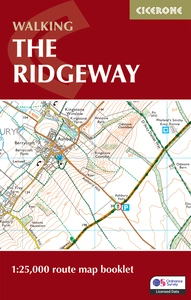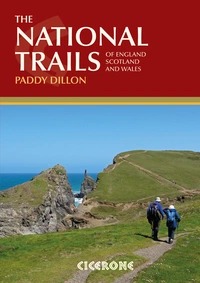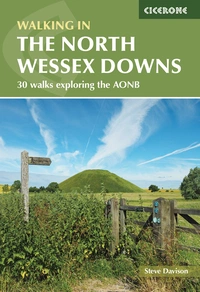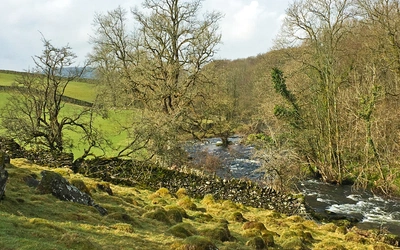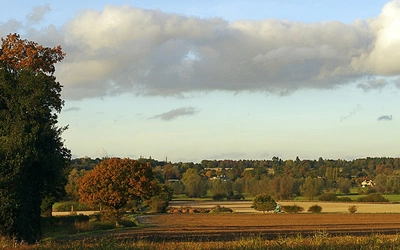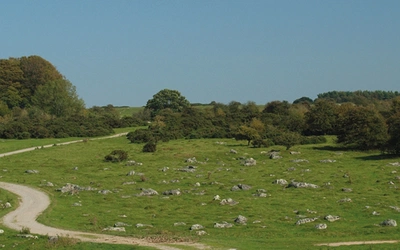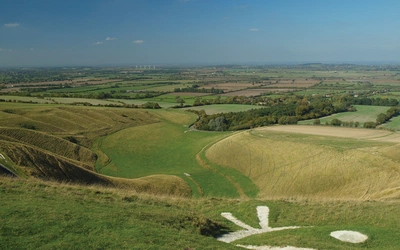The Ridgeway experience: what is it like walking Britain's oldest trackway?
Nigel Kemp fulfils a long-held ambition to walk the Ridgeway long-distance trail from Avebury to Ivinghoe Beacon in this remote part of southern central England. The Ridgeway starts at Avebury in Wiltshire. This Neolithic site of stone circles is the largest in the world and is a marvel of prehistoric Britain, dating from between 2850BC and 2200BC. The henge forms a huge circular bank and ditch that encompasses part of Avebury village itself.
The Ridgeway National Trail
Avebury to Ivinghoe Beacon described in both directions
£17.95
Guidebook to the Ridgeway National Trail, an 87 mile (139km) route through the south of England from Avebury in Wiltshire to Ivinghoe Beacon in Buckinghamshire. Accompanied by a pull-out 1:25K mapping booklet, this guidebook details the trail in both directions and features information on historic sites and facilities along the way.
More information
My reasons for being here are simple. Primarily, I am trying to raise money and awareness of Systemic Lupus, which my wife Maria was diagnosed with about 10 years ago. Another reason is equally as personal: I had recently been diagnosed with the early stages of prostate cancer. Although the prognosis is good – my counts are in single figures – the thought of having been nipped by the Iron Crab is unsettling. The ambition to do something more than to just work, sit in front of the TV and go jogging now and then had surfaced. So, what to do?
I had always wanted to walk the Ridgeway. Since boyhood I had been intrigued by what lay over the horizon. The flash of sunlight on a distant window or a car turning down a country lane always made me wonder who lived in that house or where that car was going. But as life progressed and the usual necessities took priority, this curiosity had been shunted aside – until now.
Day 1: Stumbling across Barbury Castle
From the Ridgeway sign at the start of the walk, the chalk track gradually changes to soft grass on a steady climb to Fyfield Down nature reserve. This broad grassy track continues for about half an hour until the track kinks to the left. I pass the surprise of a dew pond flecked with darting dragon flies and am then on a stony track. After another half-hour’s walk, Hackpen Hill gives me a view of the Hackpen White Horse. There are three such horses along the Ridgeway. This one was carved in 1838 and is a white blaze against the undulating green. Crossing the Broad Hinton to Marlborough Road puts me onto an exposed and level track and 45 minutes later I climb up into what at first appears to be a large playing field. It is not until I notice the concentric circles of ditches and earth ramparts that I realise I am standing in the middle of Barbury Castle.
This 11-acre site has entrances at both ends and is the only fort that the Ridgeway actually cuts through, rather than past. There is no disputing the importance of Barbury, with its magnificent views. Potential enemies approaching from any direction would have been seen early. The path from Barbury is clear, and once past the car park (and toilets) at the far end, I am on a continuing broad and grassy track. This is Smeathe’s Ridge, where I can see the tops of Ogbourne St George’s thatched roofs in the valley as the track dips towards the village. It is close to dusk, and I decide to wild camp here.
Day 2: The Vale of the White Horse
The next morning takes me down into the valley and, after a sharp right turn, onto a stony and tree-lined track to Southend. This is a small collection of well-kept thatched houses that, in the early morning silence, appears affectedly quaint as if deliberately put there for people to walk through. After Barbury this is the most built up area that I will be walking through until I reach the Goring Gap much further on. Crossing the A346 I pass the large stone abutments of the now long-defunct Midland and South-Western Junction Railway that linked Swindon to Marlborough in the 1880s.
From here I begin a long and frankly tedious drag up and along a rutted track that is one of the least pleasant parts of the Ridgeway. I realise that it could, if I am not careful, sap my morale. About an hour or more from Southend I am saved from despair by a bench under a stand of large trees with beautiful views across the Vale of the White Horse at the top of the climb.
The conditions underfoot now improve and I am back on soft grass, passing a cleft in the hillside on the right, with horses grazing close to the wire as the track eases upwards. After half an hour or so I divert to Liddington Castle, another hill fort. Liddington is a late Bronze Age or early Iron Age hill fort of about three hectares and is believed to be the site of Arthur’s Battle of Mount Badon. Arthur is the best known of all the Dark Age figures, from Bede to Beowulf. Liddington is high on the downs and commands approaches to the old Roman towns of Gloucester, Cirencester and Bath, all of which the Britons were dependent upon.
From the Ridge, I look across to Foxhill and, unfortunately, the black scar of the M4. Tranquillity comes as standard when walking the Ridgeway, and this motorway is best crossed via the bridge and as soon as possible. Once over, I return to nature. After the collection of cottages at Foxhill, I climb up and past a radio transmitter to reach the countryside again. After this, the track becomes soft going again as I head towards Waylands Smithy, which is reached after an easy walk an hour and a half away.
Waylands Smithy and Uffington
Waylands Smithy is such a part of the Ridgeway that it is easy to both eulogise it and slip into cliché when describing it. There is so much history around the walker that it is hard deciding what to include or leave out. Waylands Smithy must, of course, be included. Simply put, it is a Neolithic long barrow that was a burial place for what would be described today as the ruling elite, the name deriving from the smith god of the Saxons. As I stand here I realise that it is not that simple. Something tenuous remains around that long barrow that is impossible to grasp. Atmosphere, perhaps. It is easy to imagine being watched by those spirits of past history that some believe haunt these places. That offerings are still left here by such believers is undeniable. I notice coins, corn dollies and other artefacts here and there.
Around here, I meet another walker. His name is Roger, en ex-RAF Special Forces man, and he is walking the Ridgeway in training for a pilgrimage to Rome. His story is interesting. Shortly after leaving the service, he had opened a sports goods shop; then one day, he had felt ill. In fact, he had had a stroke. The only thing that had saved him, the hospital claimed, was his fitness. Fortunately, he had made a full recovery.
'So, I thought to hell with it. I sold the business and decided to walk to Rome. Just to prove to myself that I was ok.’
— Roger, ex-RAF Special Forces
It is the perfect example of fighting spirit, and half an hour later, we are at the classic hill fort of Uffington and its magnificent – and original – white horse. This is the best of the three white horses carved into the chalk along the Ridgeway. There is fluidity in its carving that only people familiar with horses and their movements could have captured. Whether totemic for religion or clan is not really known, but it is beautiful. Roger and I shake hands and part. I am staying at the campsite of Britchcombe Farm, and it is well worth a two-day stop to catch my breath. Like many campsites, the amenities are basic but good. There are toilets and showers, a good field to pitch the tent and, about a mile or so away, the Blowing Stone pub for real ale and food.
After the stopover I am back onto the Ridgeway and up Kingston Hill. Sparshot Firs are quickly reached and the walk is now along a wide grassy track beside the Devils Punch Bowl and I am fortunate to hear a skylark somewhere above me, which lifts my spirits. An hour later I pass Segsbury Camp – another hill fort – and carry on to the Wantage monument where I take a break. I can either camp further on or push forward onto Streatley and the YHA and the promise of a hot shower and a full English breakfast. I choose the latter. It is a pleasant long walk but it degenerates towards the end into a stony uphill track surrounded by claustrophobic bushes. I finally top out on Streatley Warren, feeling tired. The YHA feels like luxury.
Day 3: Moulsford Bridge and the incredible echoes
The following day, I cross the Thames into Goring. Here, I replenish food and water and come to terms with the noise of humanity. It is now vital to pay closer attention to the Ridgeway signs than before as I am walking between houses beside the Thames where the boats on the water are a distraction. Reaching the tranquillity of South Stoke with its thatched houses and the Perch and Pike pub, the path leads off to the right beside the Thames. About 20 minutes later I come to a double arched railway bridge. This was Moulsford Bridge, Brunel’s ‘sounding bridge’, built in 1838, and the two arches it is built upon were the largest and the longest of their day. Testing the legend of the echo is spectacular. The path continues into North Stoke and passes through the churchyard of St Mary the Virgin, built in the 11th century. The unrestored interior houses both the heavy atmosphere of history and a 13th-century font constructed from local stone. The church makes an interesting break before leaving for Nuffield.
Passing above Grim’s Ditch down a very narrow path strewn with roots, I finally climb up to Holy Trinity Church at Nuffield. The path now cuts across Huntercombe golf course with its flat greens and neat fairways. Golfers here give me sidelong glances as I wander through the car park and out the other side. The only pub in the village is The Crown, which has closed down. From here I cross the road to where trees swallow the Ridgeway. Once out the other side the path cuts across a field to Ewelme Park, once an important deer park for Henry VIII. About an hour and a half after leaving Nuffield, I come to the 11th century St Botolph’s church.
This is a remote church but surprisingly large, with two cemeteries. The one around the church is full; the other is across the crossroads. In February, the church is surrounded by and is famous for its snowdrops. The track drops down through a field, up the opposite side, and through a wood to fall away again to North Farm. A right turn through the gate takes me in time across a quiet country lane, and two hours after leaving Nuffield, I crossed the B480. After that, the turn for Watlington onto Hill Road finds me at the entrance to White Mark Farm, with its showers and toilets, and the end of the day.

Day 4: Chalky Chinnor and Lodge Hill
The next day is an easy stroll up a gently rising track to Shirburn Hill. Emerging from trees I am again on a broad and grassy track. From now on I have to cope with the noise and pollution of the approaching M40. Once through the tunnel and back into the countryside I am on easy walking that passes occasional trees and start to encounter more people, usually dog walkers. The track slowly changes from grass to chalk and I start gaining views of Chinnor and beyond. Across fields now and through a kissing gate there is a steep pull up Lodge Hill. The views across Princes Risborough and beyond are breath-taking, and I decide to wild camp for the rest of the day and drink in the view.
Day 5: Princes Risborough and Wendover - nearly there
The following morning gives me the sense of almost completing the Ridgeway. The other side of Lodge Hill is steep going down towards Longwood Farm. The path cuts across another golf course, although I am not as exposed as at Huntercombe. I cross the pedestrian crossing over the railway track, then finally turn into Princes Risborough. This is a pleasant town where a full English breakfast settles the leg muscles and prepares them for the rest of the day. I refill with food and water at Tesco, but I don’t realise that getting out of Princes Risborough is harder than getting in. There are plenty of steps cut into the hillside on the way out to help, but it is a good idea to stop at most of the benches set off to one side. The trig point at the top is a relief before lurching downhill to Cadsden, passing The Plough pub before forcing myself up towards yet another rise.
Down the other side I cut across the Chequers Estate. After that, the long pull up to the monument to the Boer War on Coombe Hill seems an anticlimax. The path undulates down to Wendover in the rain, the first I have on the whole walk. Following the advice of my guidebook I take a narrow alleyway that broadens out into a road for Barn Wood. This path seems to carry endlessly upwards and is full of split flint under depressing trees in the rain. I finally find salvation on the far side and wild camp in a cornfield.
Day 6: Beacon Hill, just me and my blisters
The last day belongs to me. My morale rises as I walk quietly through Hastoe and then Tring Park. This part of the track seems unvisited even by the dog walkers and the nettles hang limp over the path. I cross the bridge over the A41 and pass Tring station, knowing I am on the very last part. Now, the Ridgeway pulls the last of its various tricks. I have slipped into complacency after the last easy hour or two but now the track angles upwards again as I reclimb the scarp. I gratefully drop down to a broad grassy field to Steps Hill, and then, at last, Beacon Hill is reached and passed until I stand, finally, at the end of the Ridgeway.
I am quite alone. My ambitions are fulfilled. I have walked the oldest trackway in Britain. In my own mind, I had communed with the ghosts of Neolithic man, Roman centurions and Anglo-Saxons, all of them users of this remarkable track. I have been alone and unsupported for days, the occasional campsite and Roger excepted. My feet hurt, and my leg muscles ache, but I would do it again, blisters included.
The Ridgeway Map Booklet
1:25,000 OS Route Mapping
£7.95
Map of the 87 mile (139km) Ridgeway National Trail through the south of England from Avebury in Wiltshire to Ivinghoe Beacon in Buckinghamshire. This booklet is included with the Cicerone guidebook to the trail, and shows the full route on Ordnance Survey 1:25,000 maps. Presented in 12 stages in the guidebook, the trail typically takes 6-8 days.
More information

